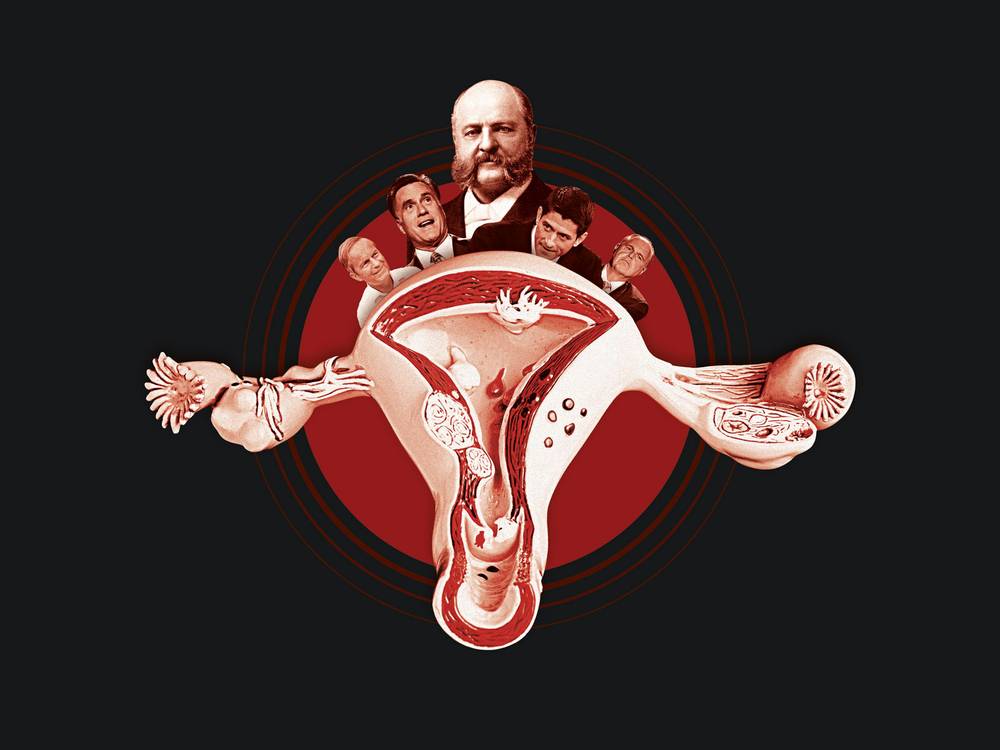Debates over birth control and reproductive rights have played a prominent role in the 2012 campaign season, and frankly, my vagina and uterus are exhausted.
According to the Guttmacher Institute, 944 provisions related to women’s health and reproductive rights were introduced in 45 states in the first three months of 2012, more than half of them designed to restrict women’s access to abortion.
Earlier this year conservative talk show host Rush Limbaugh attacked Georgetown law student Sandra Fluke, calling her a “prostitute” and a “slut” after she testified before Congress about insurance coverage for contraception. “So Miss Fluke and the rest of you feminazis, here’s the deal,” Limbaugh said contemptuously. “If we are going to pay for your contraceptives, and thus pay for you to have sex, we want something for it. We want you to post the videos online so we can all watch.”
In August, Republican Congressman Todd Akin raised eyebrows when he defended his staunch anti-abortion platform by claiming that women who are “legitimately raped” rarely get pregnant, because women’s bodies have a way of “shutting that down.” And just last week Republican presidential hopeful Mitt Romney renewed his pledge to “immediately” defund Planned Parenthood—an organization that provides sex education and vital health services to millions of women, men and young people—should he be elected.
Women’s bodies have been front and center in political discussions for months, yet surprisingly, women’s health and reproductive rights didn’t get a nod until the second presidential debate. While abortion was briefly discussed during the vice presidential debate between Joe Biden and Paul Ryan, Salon’s Irin Carmon noted that the question of abortion was couched in terms of religion, not women’s rights.
Mounting evidence suggests that as a country we are moving backwards, systematically rolling back the rights women fought so hard to gain in the 1960s and ’70s. Are we entering a new era of Comstockery, a time when birth control was illegal, disseminating information about contraceptives was cause for arrest and a black market for contraceptives—not to mention back alley abortions—was a matter of course?
In 1873 Congress passed the Comstock Act, which, among other things, defined contraceptives as “obscene” and made it a crime to distribute birth control. Named after moral crusader Anthony Comstock, the law was intended to curb what Comstock and his supporters saw as the troubling growth of the vice trades, including prostitution and various forms of commercial “smut.” Efforts to regulate public morality, while certainly not new, now included birth control, and the effects of this law would be felt for the next hundred years.
Comstock was just 29 when the law bearing his name went into effect. As a special agent with the U.S. Post Office, he was appointed to oversee its enforcement, and for the next few decades he crisscrossed the country by train, orchestrating raids and arresting smut peddlers—including people who manufactured and distributed birth control. He would later boast that during his career he had convicted enough people to fill a 61-coach passenger train, and that he had destroyed 160 tons of “obscene” literature.
Comstock didn’t discriminate between frank representations of pornography, medical texts with educational value and leaflets containing birth control information. He tirelessly pursued those he thought were criminals, donning disguises, answering ads with false names, employing henchmen and doing whatever he felt was necessary to further his crusade. He raided brothels, hunted pornographers, arrested physicians, hounded birth control advocate Margaret Sanger and entrapped abortion providers. While Comstock’s supporters commended his tireless fight against immorality and evil, his enemies publicly accused him of ignoring the personal liberties protected by the U.S. Constitution. For Comstock, the battle lines were clear: He was engaged in a noble war between virtue and vice, purity and impurity, God and Satan.
As historian Andrea Tone points out in Devices and Desires: A History of Contraceptives in America, Comstock’s views on fertility control and contraceptives mirrored what many of his late 19th century contemporaries believed. Natural forms of fertility control, such as abstinence or the rhythm method, were permissible within the context of marriage; but it was the increasingly “public face” of contraceptives and their association with the vice trades that was cause for concern. Contraceptives were associated with promiscuity, and were thus part of what Tone describes as a “domino effect of evil”: Contraceptives led to lust, and lust must be contained for the good of society.
Wrapped up in all of this were powerful ideas about protecting female purity on the one hand and women’s “natural” role as mothers on the other. To divorce sexual intercourse from procreation and suggest that sex could be “just for fun” was to pose a fundamental challenge to what many people viewed as the natural order of things. And it wasn’t just the use of contraceptives that was deemed “unnatural.” According to Tone, this assessment included women who stayed unmarried, went to college and opted to remain childless.
Although Comstock failed to eliminate the commercial market for contraceptives, he did manage to push information about birth control further underground and create the conditions for a thriving black market. Contraceptive entrepreneurs routinely disguised their products and patents through creative labeling, adopting strategies of social camouflage that relied heavily on euphemisms such as “protection” and “safety,” or references to “feminine hygiene.”
Comstock’s most enduring legacy, however, is arguably his legislative one. Following the federal adoption of the Comstock Act, 24 states enacted “mini Comstock” laws prohibiting the sale and advertisement of birth control and birth control information within state lines. And although the FDA approved the birth control pill in 1960, obscenity laws in Connecticut and Massachusetts prevented even married women from getting the pill from their physicians until 1965, when the Supreme Court struck down the Connecticut law, declaring that married couples had a constitutional right to privacy. It wasn’t until 1972, seven years later, that the same right was extended to unmarried individuals.
Recent efforts to curtail reproductive rights, restrict access to birth control, roll back Roe v. Wade, redefine rape and vilify sexually active women are concerning in their own right, but in the context of Comstock they become a looming threat to women across party lines. Reproductive freedom is not a fringe issue, but a basic human right worth protecting.







Previous Discussion: